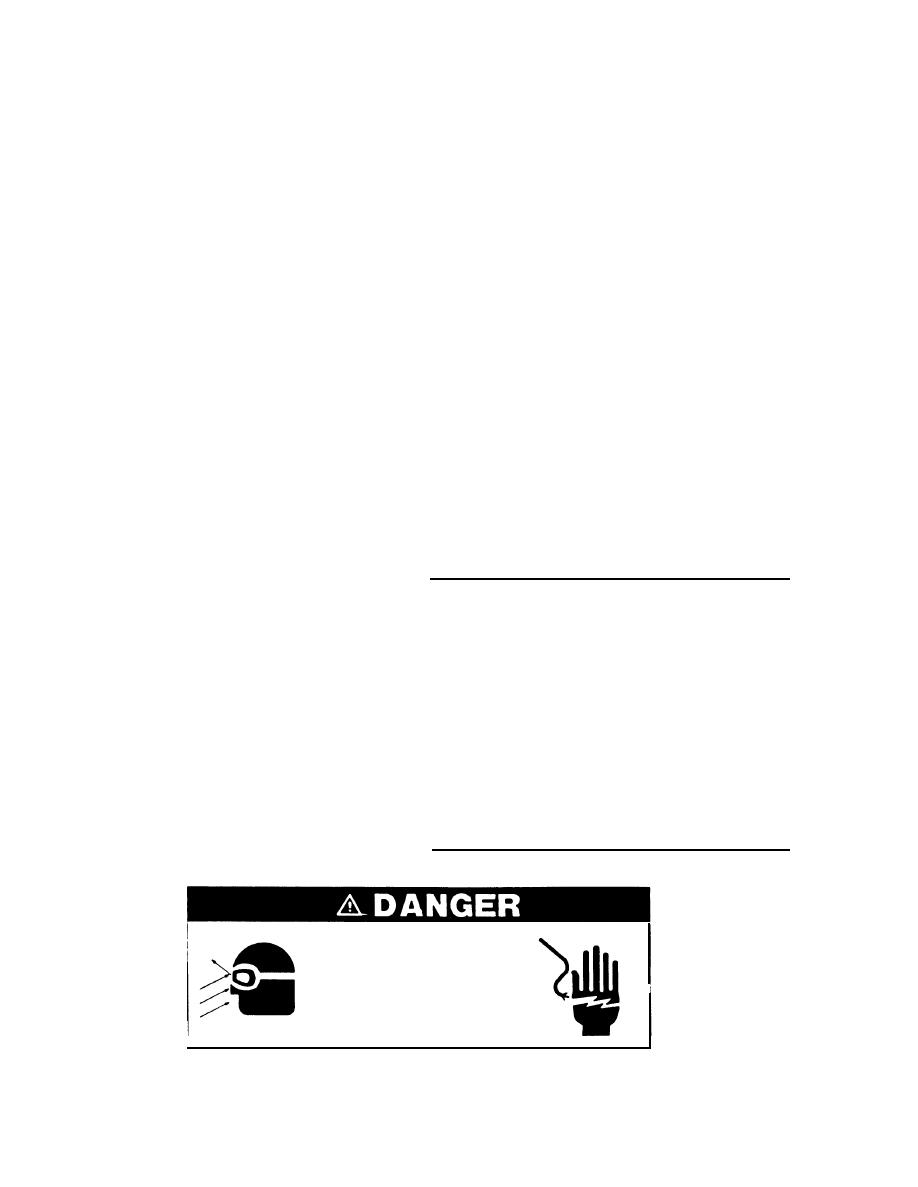

Custom Search
|
|

|
||
 TM 5-684/NAVFAC MO-200/AFJMAN 32-1082
a. Warnings. All batteries contain an electrolyte
the water as recommended to eliminate possible
which may be liquid and is corrosive. Lead-acid
bacteria. Squeeze bottles are date coded and should
batteries contain diluted sulfuric acid and nickel-
be replaced before the expiration date. Exercise can-
cadmium batteries contain potassium hydroxide.
ister units periodically to prevent clogging of the
Direct contact with the electrolyte should be
head. Ensure that a good flow of water is available
avoided as contact may result in severe chemical
when it's really needed.
burns. Accidental contact must be removed immedi-
c. Explosive gas hazard. The NEC requires re-
ately by washing and flushing with baking soda
moval of possible explosive gas buildup, since all
(bicarbonate of soda). This solution is beneficial in
battery types can outgas. Check that gas accumula-
neutralizing either alkaline or acid electrolyte. Ex-
tion is limited to less than 2 percent of the total
treme care must be taken in the use of hydrometers
volume of the battery room or enclosure. For flooded
or syringes to avoid accidentally squirting electro-
lead-acid batteries, the maximum hydrogen evolu-
lyte at or on anyone.
tion rate is 0.000269 cubic feet (7618 cubic millime-
(1) Warning notice. It is recommended that a
ters) per minute per charging ampere per cell at 77
warning notice be posed near the battery installa-
degrees F (25 degrees C), one atmosphere. The
tion as shown in table 14-1. Use the first parenthe-
maximum rate occurs when a fully charged battery
sis as applicable to the electrolyte type. Fill in the
has maximum current forced into it.
fault current amperes.
(2) Warning sign. It is recommended that a
d. Electrical hazard. Most batteries are operated
warning sign be posted in advance of the installed
ungrounded, so touching a live part will not result
table 14-1 warning notice. Figure 14-1 is a warning
in a shock. The real hazard exists when an acciden-
sign used by a manufacturer who provides small
tal ground is already present and a person touches a
sealed, low-gassing type batteries. Note that this
live part. In this case, the person completes the
warning sign indicates DANGER even for what is
circuit to ground and current will flow through the
represented as a small sealed-battery system. Par-
person. While personnel may recognize that this
ticular attention must be given to the prevention of
sparks or flames near batteries. The hydrogen gas
Table 14-l. Battery room warning notice
produced by charging batteries is flammable in an
atmosphere where the gas content exceeds 4 per-
Batteries contain (sulfuric acid) (potassium hydroxide solution).
If the electrolyte is splashed on eyes, flush with clear water and
cent hydrogen gas. If the mixture contains more
consult a physician. If the electrolyte contacts the skin, flush
than 8 percent hydrogen, it can explode.
with clear water. Storage batteries are high current sources.
b. Electrolyte hazard. Battery rooms are required
Accidental short circuits can cause severe arcing, equipment
by OSHA to provide emergency-use quick-drenching
damage, battery explosion, and personal injury. This installation
facilities for the eyes and body within 25 feet of the
can deliver a fault current of 1,000 amperes. Do not use
uninsulated tools or touch uninsulated wires or terminals. Re-
work area. Permanent emergency eyewash and
move conductive watches/rings/bracelets, and wear both eye pro-
showers are recommended. Portable emergency eye-
tection and protective clothing when working on batteries. Keep
wash and showers must be brought into the main-
batteries upright. Use tools with insulated handles. Do not
tenance area if permanent facilities are not pro-
smoke or permit naked flames near the battery. Do not wear
vided. Squeeze bottles can substitute for eyewash
clothes which can create static electricity. Switch off circuits
before connecting or disconnecting the battery to avoid sparks.
fountains, and canisters that resemble fire extin-
Be sure connections are tight before switching on. Two people
guishers can be fitted to provide an eyewash or a
should perform battery maintenance inspections, with only one
quick drench. Periodic inspection and maintenance
person working on any battery at the same time.
of these devices are mandatory. Be sure to change
Hazardous voltage.
Will cause severe
injury or death.
USE INSULATED TOOLS
WEAR EYE PROTECTION
Figure 14-1. Battery warning sign
14-2
|
 
|
|
 |
||